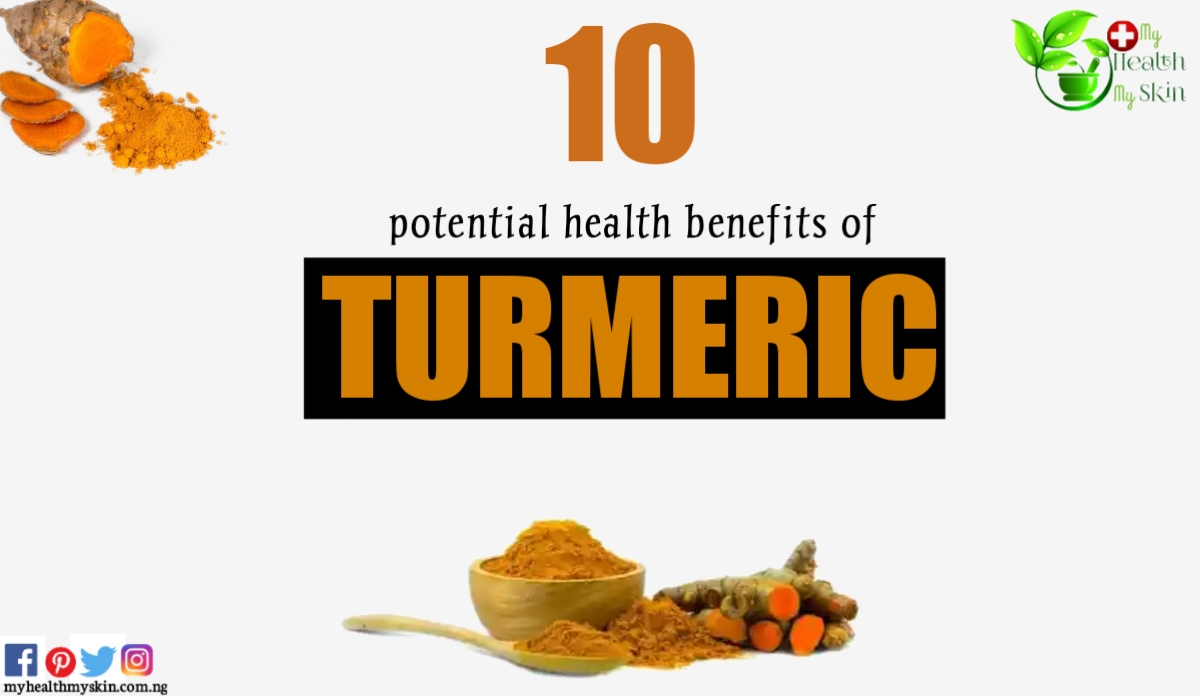Turmeric not only adds delicious flavor to food — it’s also full of nutrients. People have been using the root for cooking and healing for thousands of years.
The yellow-colored chemical (known as curcumin) in turmeric is often used to color foods and cosmetics. And the most popular way of consuming turmeric is in the form of tea.
Ancient writings from Rome, China, India, and Arab countries all describe turmeric’s uses as a medicine. Turmeric has a long history in ayurvedic medicine.
It was especially popular in Asian medicine as a treatment for pain, fatigue and inflammation issues, including depression and itching.
Other traditional medical uses for turmeric include treating diseases, hay fever, high cholesterol.
Today, people still consider turmeric a natural remedy for conditions involving pain and inflammation, such as osteoarthritis, and there’s research to back up its health benefits. Turmeric is also used in tons of modern recipes.
[lwptoc]
Defining Turmeric (Curcuma longa) and Understanding What It’s Good for
Turmeric, the common yellow spice is a
tropical flowering plant which is thought to originate from South Asia, most probably from Vietnam, China or western India. Today, tumeric has a pan-tropical distribution and it is considered a culinary spice in some areas. The scientific name for turmeric is Curcuma longa. It’s classified as a member of the Zingiberaceae family, making it a close relative of ginger.
The leafy plant grows to about 3 feet (about 1m) tall with large, 5 inch (13cm) tick greenish leaves, and the blossom are green and white edged with vibrant pink and yellow. Turmeric’s root or rhizome is the part used as a spice or healing aid.
Depending on the variety, the inside of the root can be bright yellow, white, red, or orange. Turmeric roots are harvested by pulling the entire plant out of the soil, removing the leaves and cleaning the root. Also Its harvested in winter after it is has died down and the leaves and stem are dried down.
Turmeric can be consumed in it’s raw form, dried and stored as a spice, or made into tablets, capsules, and liquid extracts. There’s about 3% — 7% of essential oil in the root, which is used in the cosmetic industry as a fragrance in soaps and beauty products.
What’s in Turmeric Exactly? A Closer Look at Its Nutrition Facts
There are lots of different vitamins and minerals in turmeric.
1 tablespoon of fresh turmeric has:
- 29 calories
- 0.91 grams (g) of protein
- 0.31 g of fat
- 6.31 g of carbohydrates
- 2.1 g of fiber
- 0.3 g of sugar
Vitamins and minerals present in fresh turmeric in trace amounts:
- 26 percent of daily manganese needs
- 16 percent of daily iron
- 5 percent of daily potassium
- 3 percent of daily vitamin C
The U.S. Department of Agriculture’s Deitetics guidelines notes that turmeric is considered safe and nutritious when eaten as part of a healthy diet.
Concentrated supplements deliver the root’s chemical compounds in higher doses and run the risk of causing possible side effects, like rashskin, yellow Stool, headache and diarrhea.
What Are the Science-Backed Health Benefits of Turmeric?
Turmeric contains 100 chemical compounds, but researchers believe the curcumin compounds are the ones responsible for most of the potential health benefits. Curcumin is a very strong antioxidant with a powerful anti-inflammatory effects that can help the body in a variety of different ways.
1. Boost Immune System
Turmeric stimulate the body’s immune system. A strong immune systen means the lower chances of having cough, cold and flu.
2. Healing Properties
Whenever a person gets hurt and bleed, the first thing to do is to give him a glass of milk with a teaspoon of turmeric powder dissolved in it. If you have a burn, cuts, or wound, apply turmeric powder to speed up the healing process.
3. Relieve Arthritis
Turmeric can help in chronic joint pain, muscle pain and Arthritis caused by inflammation. I drink turmeric powder in milk and eat fresh turmeric cooked in the form of veggie curries. It is very effective in controlling the pain and stiffness in my body joint.
4. Delay Ageing
The turmeric prevents and fight age related chronic diseases like heart disease, cancer and Alzheimer disease ans improves brain functioning, so definitely it may delay ageing process.
5. Prevents and Treats Alzheimer’s Disease
Helping to prevent the progression of Alzheimer’s disease consuming turmeric may delay all or even reverse many brain diseases and age related brain dysfunction.
6. Prevent & Treat Cancer
Turmeric can prevent and treat colon cancer, pancreatic cancer, skin, mouth, Vulva and breast cancer.
7. Reverse Heart Disease
Curcumin can help reverse heart disease, effective in cleaning arteries and decreasing the blood cholesterol level.
8. Weight loss
Turmeric can help break down fat in the diet. Have a teaspoon of turmeric powder in milk cold water or with food to maintain your weight.
9. Control Diabetes
Turmeric can moderate insulin levels and help reduce insulin resistance, preventing the onset of type 2 diabetes.
10. May Improve Skin Health
The anti-inflammatory, antimicrobial, and antioxidant properties in turmeric may be an effective treatment for a variety of skin problems, including acne, eczema (atopic dermatitis), photoaging, and psoriasis. Yet robust research is lacking.
A review published in the January 2018 issue of Open Access Macedonian Journal of Medical Sciences suggests oral curcumin in particular may be an effective and safe treatment option for psoriasis (a chronic inflammatory skin disease), but more studies are needed before making recommendations.
According to the authors of another review, topical curcumin treatments may be useful in treating skin disorders, especially as past research suggests curcumin is relatively safe even at high doses. But curcumin’s bright yellow-orange color, poor solubility, and poor stability at a high pH make it an unappealing topical skin treatment.
All the Different Ways You Can Include Turmeric in Your Diet
How To Take Turmeric
Take turmeric as fresh fruit or dried powder, tea and capsule. Dissolve some turmeric powder in water or milk and drink. Fresh turmeric roots can be consumed by making veggie curry by mixing some ginger, garlic, cloves and black pepper in it. Turmeric is poorly absorbed by the body, so add some black pepeper and oil to improve it’s absorbance in the body
Turmeric Dosage
500 mg curcumin in 1 tspn of fresh or powder Turmeric. Consume 1/2 to 1 Tsp daily in the form of dey powder or fresh fruit. The turmeric doses of 500mg to 2000mg may be effective.
As turmeric is consumed because of its potential health benefits, It is also important to know about the possible side effects of too much intake of turmeric. Some people are concerned about the possible side effects of high-dose turmeric and curcumin supplements. Let’s look at possible side effects of turmeric.
Turmeric Side Effects
Who should not take turmeric?
Turmeric is safe for most people. Consult your doctor before you start taking turmeric or curcumin. The pregnant women, people susceptible to kidney stones and stomach ulcers should not consume it. People on diabetes, blood pressure, cholesterol and blood thinner medicine should consult doctor.
How Can You Grow Turmeric in Your Home Garden?
Because turmeric is a tropical plant, it won’t live year-round in colder climates. But that doesn’t mean you can’t grow it at home. Plant it during the beginning of spring (whenever you’re sure there won’t be frost), or keep pots in the warmest place where you can find 86 to 95 degrees is ideal.
Growing turmeric is pretty simple. Like potatoes, you can start a new turmeric plant from a healthy root you buy at the produce market. Look for one that’s about 6 to 8 inches and has some buds growing on it. Soak the root in water for a few hours before planting to encourage growth.
Follow these steps, too:
- Select a pot that’s deep enough for the root (a medium-size pot around 14 to 18 inch pot).
- Fill 3-inch pot halfway with healthy soil, something full of compost that lets water in and out.
- Plant the rhizome section flat on the soil, and cover with more potting soil.
- Place the pot somewhere to get sun for most of the day.
- Water regularly to keep the soil slightly moist.
- Harvest once the leaves and stem start to turn brown and dry, about seven to 10 months after planting.
A Look at Some Turmeric FAQs and the Answers
How popular is turmeric?
People have been eating turmeric for thousands of years. The root started as an ancient medicine and a common ingredient in Indian and Chinese cuisine, but now you can find it almost anywhere. Even turmeric tea has become a thing!
What is turmeric tea?
Turmeric is a spice that is native to southeast Asia. It has been a staple of Indian and Chinese cuisine and medicine for thousands of years. In the past couple of decades, it has started to make impact in the western world. It is made with freshly ground turmeric root that comes in tea packets that are ready to brew. These are available at local health stores and online.
How to make turmeric tea?
Here’s The Ingredients You’ll Need:
- 2 Cups of Water
- 2 Tsp of Turmeric
- 1 Tsp of Cinnamon
- 1 Tsp of Ginger
- Pinch of Clove
- Pinch of Nutmeg
Simmer for 10 minutes, then strain. Add a dash of Coconut Milk and Honey. Enjoy!
What are the health benefits of turmeric tea?
The reason for the excitement over this spice is the active compound found in turmeric called curcumim. The medical community has discussed the health benefits of turmeric tea for several decades. The primary benefit for health includes:
- Fights inflammation
- Improves digestion and metabolism
- Reduces the risk of heart diseases
- Fight free radicals that may cause cancer
- Lowers cholesterol levels
- Reduce risk of illness such as common cold and fever.
What are the health benefits of turmeric in milk?
1 Adding turmeric in milk is highly beneficial in reducing pain, swelling.
2 Turmeric milk is also a powerful anti-oxidant. It protects our body from damage caused by free radicals. It thus reduces the risk of cancer, diseases of heart.
3 Taking a teaspoon full of turmeric in a glass of warm milk every day to keep the common cold and flu at bay.
How to make turmeric milk?
- Add around 1 teaspoon turmeric powder or 1 inch of fresh ginger in a glass of milk.
- Boil it for 10 to 12 minutes.
- Once you strain it, your turmeric milk is ready for drinking.
- Add honey or sugar for sweetening if required.
- You can also add clove, ginger, cinnamon, cardamom to it while boiling for additional health benefits.
- Always add a pinch of black pepper to turmeric milk for better absorption of turmeric by our body.
What does turmeric vitamins do for you?
Turmeric contains vitamin C, Vit B6 and other antioxidants that help reduce the risk of serious health conditions like heart disease and diabetes.
What is turmeric good for?
Several high-quality studies has proven that Turmeric can help relieve hay fever, depression, high cholesterol, a type of liver disease, and itching. It is also help for brain health.
What is turmeric essential oil good for?
Turmeric essential oil is good for supporting the digestive system and can help reduce fluid retention. It is also a remarkable antin-flammatory and analgesic powerhouse. It may also sever as a immune booster a and detoxifier.
How long does fresh turmeric stay good?
Turmeric will generally not go bad if it’s properly stored. The longer it’s in storage, the weaker the aroma, and the flavor will not be as strong. Fresh turmeric when kept in the fridge stays good for a couple of weeks. When frozen, it will last for about to 6 months. Turmeric should be used within 4 years for the best quality.
How do you know if turmeric root has gone bad?
To check whether ground turmeric is still potent enough to be effective: Rub or crush a little amount in your hand, then taste and smell it. If the aroma is weak and the flavor is not obvious, the ground turmeric should be replaced.
Are there any reasons someone should avoid turmeric?
Do not consume turmeric if you have liver, or bile duct problems as the can increase bile production, other reasons include:
Bleeding problems: The intake of turmeric might slow blood clotting. This might increase the risk of bruising and bleeding in people with bleeding disorders.
What foods does turmeric taste best with?
Rice, quinoa, bulgur and couscous all mingle well with turmeric. Popular rice pilafs like this Texas Spanish Rice get their golden hue from turmeric. Adding cracked pepper significantly increases the effectiveness of turmeric, so be sure to add a dash of black pepper to the mix!
Which has more health benefits: fresh or dried turmeric?
Fresh and powdered turmeric are different versions of the same root or rhizome. The nutrients in fresh turmeric are more easily absorbed and used by the body when compared to those in the dried and powdered variety. In particular, the main antioxidant compound in turmeric known as called curcumin is more easily used by the body.
Does turmeric interact with any medications?
Medications that slow blood clotting (Anticoagulant / Antiplatelet drugs) interacts with TURMERIC. Turmeric might slow blood clotting. Taking turmeric along with medications that also slow clotting might increase the chances of bruising and bleeding.
Can you eat too much turmeric?
Turmeric usually does not cause significant side effects; however, some people can experience stomach upset, nausea, dizziness, or diarrhea. In one report, a person who took very high amounts of turmeric, over 1500 mg twice daily, experienced a dangerous abnormal heart rhythm.







